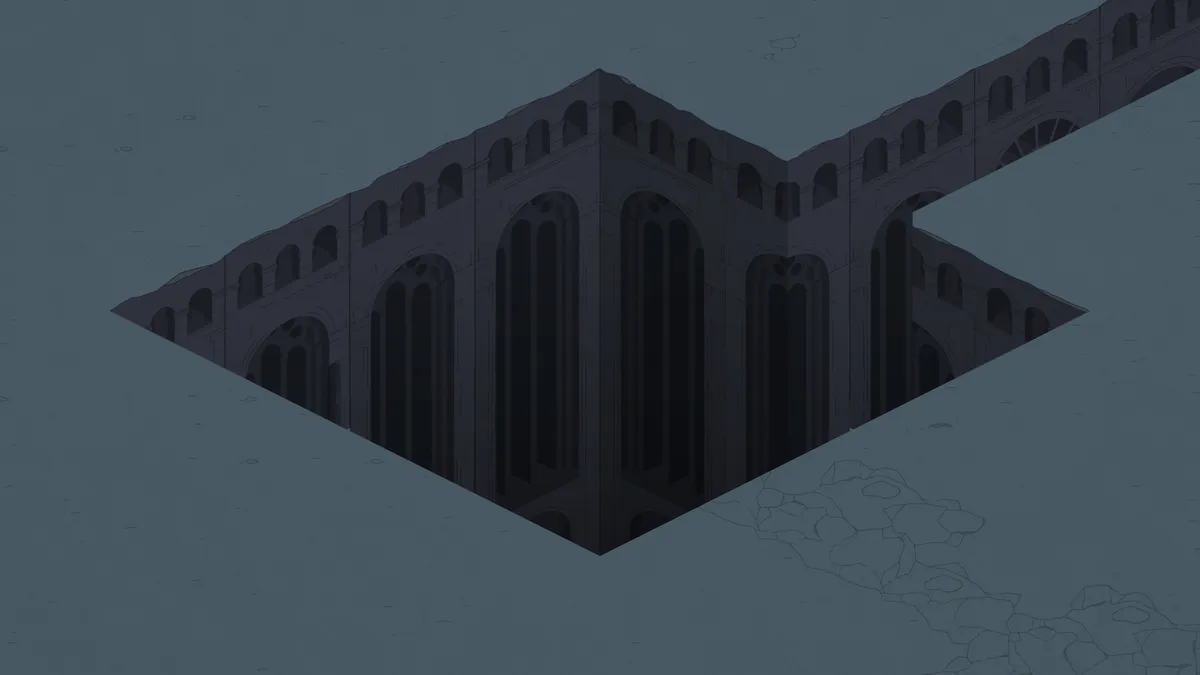Creating An Old City
Amberspire Design Diary #14
A collection of thoughts on my design and experience goals for a player feeling the history of the city they've created. See the other design diaries, wishlist the game, or subscribe to our newsletter.

I wish city builders had more friction. I enjoy playing city builders tremendously, and as far as the extremely broad genre of management games go it is my favorite kind within that. But management games take on many forms, and unfortunately I think city builders are sometimes are not focused enough.
There's many reasons, and that's also not to say they are badly designed! The kinds of friction in these homeostatic management games are fun, and there are many experimentations with the form.
I want more friction from history in my city builders. I can understand why they don't typically have this: preventing players from correcting mistakes, or adjusting streets & services would require a radical alteration in the fundamental concept of a city builder. It's a short walk from city builder to Permit Petitioner 2025, and that's not fun (yet).
Still, I wish cities had a sense of history to them. Looking at a screenshot of a city in Cities Skylines or Sim City, I can appreciate the size and maybe guess that the middle-ish part was built first, but I don't get a sense of history. There are no annoyingly winding streets sprouting inconvenient dead ends, areas without transit access, regions rebuilt after a natural disaster, &c.
That said, in a typical city builder, the player is not constantly rebuilding the entire city to suit her goals in every moment. The player builds the city, it gets larger and larger, and the game continues.
Importantly, the player is given the tools to rebuild the city if desired. The primary cost (generally) is the time commitment required to do this from the player. I've written about player time as cost before, although I don't believe it is a factor here. The important aspect is that the player is given these tools to be able to adjust their city without a cost - removing buildings, destroying streets, rebuilding tunnels!, are all open to easy adjusting. This creates a small but persistent cycle of self correction, but without any entropy to that correction. The player builds their city, makes some mistakes or is introduced to new systems, and erases and improves small areas of their city continuously as they play. Without entropy however, there is no real long term penalty to doing this, only upside. Cities do this in real life all the time, but the costs are enormous and fiercely contested over years and decades. My desire (and goal for Amberspire) is for city builders to somehow incorporate long term tradeoffs to the goal of improvement.
Tradeoffs
These tradeoffs can be anything! For better and worse, one of the most engaging elements of a city is the inertia of real world physics, bureaucracy, and the people living there. Hong Kong is bound to its island, Florence has no highrises, Baghdad bears thousands of years of history. These are lofty ideals for any game, including Amberspire, to reach. But I wish while playing city builders I could feel the weight of my own previous actions reflected in the character of the city.
I wanted to capture this feeling in the game, but how exactly was extremely elusive. My end goal was clear: I wanted the player, while showing their city to another person, explain the various decisions and processes that led to the current layout. And not just “this area is where I put all these buildings and laid out the streets in this manner” but more more multivariable: “here’s this section of the city, because some buildings got removed it hasn’t been able to to fully regrow into the new space, and the floodplains are a problem so the resident population is sparser than I’d like.”
The combination of the player’s decisions and the game’s random processes, in my view, is what would characterize a truly interesting neighborhood of a city. No city in the real world is under complete control of one person or process, insulated from nature and politics.
I am wary of being lost down a very deep rabbit hole here with feeding so many inputs into a system that the output becomes oatmeal. The terrain system discussed in a previous design diary gives the feeling of weather impacting the city and topography, so really what I was looking for was a lingering effect of the player’s decisions. Most importantly, I wanted players to look at different areas of their city and have a visual and mechanical representation of the age of that part of the city.
The Mausoleum
A few fun ideas came about to reflect this: the moon the player is building a city on is in fact a giant mausoleum, mostly hollow. And the other is punching holes into the ground.
The game in fact starts you near a large spire, a chasm into the darkness. You can’t build into the open space, but are otherwise free to build and remove buildings elsewhere on the landscape. When a building is removed however, either voluntarily or through other means, a small hole is created in the surface. That hole can spread, creating larger holes or even joining with the original spire.
My intent is not to punish the player or make their lives difficult, but to reflect their decisions into the landscape. Removing buildings will begin to limit how many new buildings can take their place. Aggressive terrain destroying your buildings damages the landscape. After a long enough time you’ll be able to look at your city and see the history crowding the present.